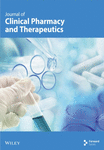Investigating relationships between a range of potential indicators of general practice prescribing: an observational study
Abstract
Objectives: (i) to describe the variation in a number of potential prescribing indicators across a large number of general practices, (ii) to determine whether particular indicators are associated with higher or lower overall prescribing costs, (iii) to determine how particular indicators are correlated with each other, (iv) to determine whether the indicators are stable over time. Design: Observational study based on the analysis of PACT (Prescribing Analysis and Cost) data for general practices. Setting: The Trent region of England. Subjects: 809 general practices. Main outcome measures: Variations in a range of potential prescribing performance indicators; correlations between these indicators and NIC (net ingredient costs) per ASTRO-PU (Age, sex and temporary resident originated prescribing unit); change in indicators between the financial year 1994–5 and 1995–6. Results: Wide variations were found between practices in a range of potential prescribing performance indicators. There were positive correlation ( P< 0·001) between NIC per ASTRO-PU and indicators of relatively high cost prescribing within different therapeutic areas. There were negative correlations ( P< 0·001) with indicators of relatively low cost prescribing. There were positive intercorrelations ( P< 0·001) between indicators of relatively high cost prescribing. For most indicators there were significant changes ( P< 0·001) in values between the two years. Conclusion: There are considerable variations between general practices in prescribing performance indicators and the indicators show changes over time. We have demonstrated correlations between different indicators that lend support to the idea that such indicators might act as proxies for more general prescribing patterns. However, most of the correlations we observed were not strong. Further research is needed into the development and use of indicators based on PACT data.




